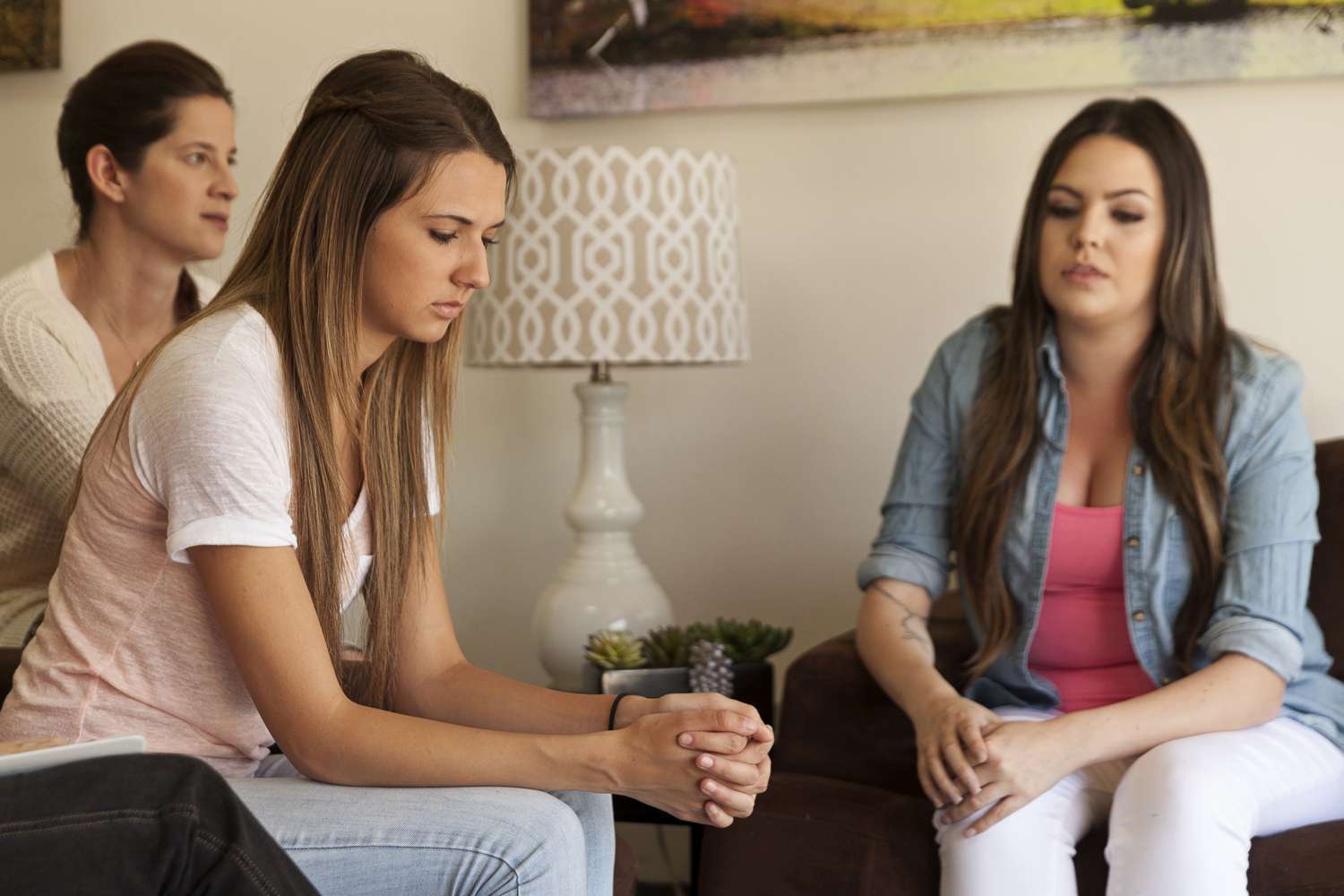If you or someone you love has been diagnosed with borderline personality disorder (BPD), your first question will likely be whether the condition can be cured. While there is no definitive cure for BPD, it is absolutely treatable. In fact, with the right treatment approach, you can be well on the road to recovery and remission.
While remission and recovery are not necessarily a “cure,” both constitute the successful treatment of BPD. By definition:
- Remission is the stage where you no longer meet the specified criteria for a BPD diagnosis.
- Recovery is less well-defined, but suggests that you are able to function in all aspects of your life for an extended period of time. This includes holding down a job and maintaining meaningful relationships.
Treatment Goals
In the past, many doctors believed that BPD was untreatable and lumped it together with other hard-to-treat conditions like antisocial personality disorder (ASPD). As scientists have gained greater insights about the disorder, newer treatment approaches have helped many achieve lasting remission from BPD, in some cases without the use of drugs.
Results can differ, with some responding better than others. But for the most part, with informed and individualized treatment, BPD can be controlled in the same way as diabetes or other chronic conditions. The disease may not go away, but it can be managed in a way that affords a better quality of life.
Remission Rates
A 2015 study reported that most people with BPD will no longer meet the diagnostic criteria for the condition by the time they reach adulthood. By all accounts, most people tend to eventually outgrow their symptoms and achieve remission as part of the natural course of the disease.
A study published in 2012 followed 290 patients with BPD every two years for 16 years. What they found was that remission (defined as no longer meeting the diagnostic criteria for at least two years) tended to occur spontaneously within two to eight years of the diagnosis and initial treatment.
After 16 years, 99% had achieved a two-year remission, while 78% had experienced an eight-year remission. The same study revealed that symptom relapses tended to wane over time as well, from a high of 36% after two years to around 10% by eight years.
It is important to note, however, that these statistics are based on people who were diagnosed and treated for BPD. The results did not include what types of treatment were provided or what maintenance therapies may have been used. As such, it is not clear how much the various treatments influenced remission rates or if undiagnosed people will outgrow the condition as well.
Treatment Approaches
The treatment of BPD can vary based on the severity of symptoms and/or any co-occurring disorders. The tools for treatment typically include psychotherapy and medications.
Psychotherapy
The backbone treatment for BPD is psychotherapy, also known as talk therapy. Among the various approaches:
- Cognitive behavioral therapy (CBT) is the foundational structured approach to talk therapy incorporated into all other forms of psychotherapy.
- Dialectical behavior therapy (DBT) is a type of CBT that aims to identify and change negative thinking patterns, incorporating skills training to control emotions and tolerate distress.
- Mentalization-based therapy (MBT) aims to improve mentalization (the process by which we make sense of each other and ourselves, implicitly and explicitly).
- Schema-focused therapy (SFT) aims to identify and change deeply held thought and behavior patterns associated with our past (usually those we cling to for emotional survival).
- Transference-focused therapy (TFT) aims to prevent negative feelings about past experiences and people being transferred to current experiences and people.
- Systems training for emotional predictability and problem solving (STEPPS) is a 20-week educational program that helps people with BPD identify the behaviors and feelings associated with their diagnosis and gives them the skills necessary to change behaviors and manage feelings.
All of these therapies are appropriate for BPD treatment, approaching the disorder in slightly different ways. There is not one that is inherently better than the others. The choice depends largely on the effectiveness of your interactions with your therapist and your openness to the technique.
Never be afraid to ask why the therapist has chosen a specific therapeutic practice. It can help you better understand the aims of the treatment and decide whether it is the right approach for you.
The Best Online Therapy Programs
We’ve tried, tested and written unbiased reviews of the best online therapy programs including Talkspace, Betterhelp, and Regain.
Medications
Medications can be helpful in treating some of the symptoms of BPD. While drugs are not always needed, some of the more commonly prescribed include:
- Antidepressants, including selective serotonin reuptake inhibitors (SSRIs) commonly used in first-line therapy
- Antipsychotics, such as Zyprexa (olanzapine) which is known to reduce impulsivity, hostility, and psychotic symptoms of BPD
- Mood stabilizers, including Topamax (topiramate), Lamictal (lamotrigine), and Depakote (valproate semisodium) which may be useful in treating BPD aggression
- Anti-anxiety medications, including Ativan (lorazepam), Klonopin (clonazepam), Xanax (alprazolam), and Valium (diazepam)
Co-Occurring Conditions
According to a report from the National Institute of Mental Health (NIMH), 85% of people with BPD will have at least one other mental health disorder, including anxiety disorders, impulse-control disorders, substance abuse or dependence disorders, and mood disorders (like major depressive disorder or MDD).
People with BPD will often meet the criteria for other personality disorders as well. The average number of co-occurring conditions in BPD is three. These co-occurring conditions (also known as comorbidities) can make treatment far more complex and result in delayed or missed diagnoses due to overlapping symptoms.
When a dual diagnosis is made, treatment is usually staged so that the symptom with the greatest likelihood of success is treated first. For instance, if you also have MDD, a common BPD comorbidity, you would be prescribed an antidepressant to reduce depression symptoms common to both MDD and BPD.
Press Play for Advice On Reducing Depression
Hosted by Editor-in-Chief and therapist Amy Morin, LCSW, this episode of The Verywell Mind Podcast shares how you can use behavioral activation to reduce your depression. Click below to listen now.

Subscribe Now: Apple Podcasts / Spotify / Google Podcasts
Coping
If you think that you have BPD or have been diagnosed with the condition, there are steps you can take to better cope as you explore treatment options.
- Do not panic. Remember that your chances of remission are good. As with all mental health disorders, early diagnosis and treatment will almost invariably afford better results than a delayed diagnosis and treatment.
- Seek specialists experienced in BPD. This not only avoids missed diagnoses and comorbidities, but it also improves your chance of receiving the most up-to-date treatment, ideally with the fewest side effects and complications.
Borderline Personality Disorder Discussion Guide
Get our printable guide to help you ask the right questions at your next doctor’s appointment.
:max_bytes(150000):strip_icc()/illo_Doctor-discussion-guide-mind-08-5c60ad2a46e0fb000158767e.png)
Download PDF
- Find the right therapist for you. Therapy relies heavily on trust and open interaction. Take the time to interview several therapists, zeroing in on someone with whom you feel safe, comfortable, and supported.
- Educate yourself. Take the time to learn about your condition and become an advocate in your own care. You will feel more empowered by doing so and be better equipped to participate as a partner rather than a follower.
- Apply new skills. Your treatment should never be solely confined to medications or therapy sessions. There are plenty of self-help strategies you can incorporate into your life. These include journaling, expressive writing, art therapy, and mindfulness meditation.
- Involve your family. A BPD diagnosis affects the entire family. Treatment is often more successful if others participate as it helps repair emotional fractures that compound your illness. Family therapy can not only help you recover from BPD, but it can also help your family as well.
There is no cure for borderline personality disorder, and no matter how successful treatment might be, the risk of BPD symptoms returning is real and cannot be ignored.
Nevertheless, the road to recovery following treatment for borderline personality disorder is relatively straightforward. BPD symptoms tend to peak in young adulthood and gradually fade over time, to the point where they’re no longer a feature of daily life. When treatment is provided the process of age-related decline in BPD intensity is quickened and the chances of enduring recovery are excellent.
In one recent study involving people who were hospitalized for borderline personality disorder and then released, 70 percent of participants no longer met the criteria for BPD at some point during the following six years. Among this group, 94 percent suffered no recurrence of their conditions and were able to maintain their symptom-free status indefinitely.
These results agree with the findings of two other borderline personality disorder research projects, both of which were first discussed in peer-reviewed medical journals in 2005.
In the first of these studies, called the Collaborative Longitudinal Personality Disorders Study (CLPS), several hundred patients diagnosed with personality disorders were tracked over a period of 10 years as they participated in outpatient recovery programs. Among BPD sufferers, 85 percent experienced extended symptom-free periods lasting 12 months or longer, and out of this group only 11 percent suffered any type of relapse. This means about 77 percent of individuals receiving treatment for BPD stopped having symptoms altogether, and this high rate of recovery was easily the best out of the various personality disorders included in the research project.
The second of these studies was sponsored by the McLean Psychiatric Hospital in Belmont, Massachusetts. This open-ended initiative monitored the ongoing progress of almost 300 BPD patients who were hospitalized in that facility and then released. They found that after 16 years, 99 percent of BPD patients treated at the McLean facility had achieved symptom-free periods of two years or longer, and 78 percent had extended that period to at least eight years. Among the latter group relapse rates were only 10 percent, again showing that continuing freedom from BPD symptoms was an achievable goal for most.
These promising statistics about recovery do not imply that hospitalization or outpatient treatment (or any other type of treatment, for that matter) can cure borderline personality disorder. But they do reveal that borderline personality is highly amenable to treatment and that sufferers do not have to remain trapped by their emotional turmoil forever. Time plus treatment are a potent anti-BPD combination, and they can work wonders in the lives of people diagnosed with this disruptive and difficult illness.




